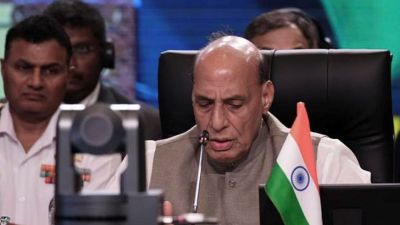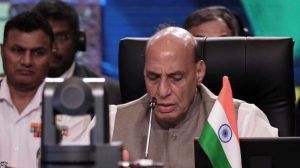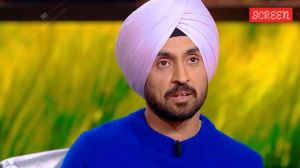Twenty-five year old engineering student Sunil (name changed) smiles feebly as he is now able to breathe on his own without tubes and is able to have mashed dal and rice. Having regained his strength, he wants to be his joyous self as he was just a month ago, dancing at a friend’s wedding. Then he suddenly felt weak in the limbs and collapsed in a heap. Within hours, he could not swallow — the water he sipped leaked from his nose — or breathe. Then his legs gave way. Little did he know that these were signs of Guillain-Barré Syndrome (GBS), a rare neurological disorder where the body’s immune system mistakenly attacks its own nerves, thinking them to be the enemy.
“This leads to muscle weakness, tingling in the hands and feet, difficulty walking, and, in severe cases, paralysis. GBS can develop after infections, especially from bacteria and viruses, triggering an immune response that damages the nervous system,” says Dr Sudhir Kothari, consultant neurologist at Poona Hospital and Research Centre. A majority of the cases from Pune were linked to the diarrhoea-causing Campylobacter jejuni bacteria, which was possibly transmitted through contaminated water. “But the ones from the rest of the country do not have any such data and they may very well be the usual cases of GBS which often follow upper respiratory tract infection,” says Dr Kothari.

Varying symptoms and treatment
Sunil had diarrhoea a few weeks before he showed symptoms of GBS. For 52-year-old trucker Hari (name changed) at Sassoon General Hospital, the onset was quicker after a bout of fever. “I travelled to Madurai on January 23 and developed a fever. I took some tablets but since I didn’t feel better, I returned to Pune,” he says. The day he returned, he could not lift his hand and felt a terrible weakness. “I was not able to walk even with support,” he recalls. Dr Rohidas Borse, Professor and Head, the Department of Medicine at B J Government Medical College and Sassoon General Hospital, says Hari is now able to hold his head as his neck muscles have regained their strength. “The disease takes its course and physiotherapy will be required daily,” he says.
Story continues below this ad
At the paediatric intensive care unit, Dr Aarti Kinikar, Professor, B J Government Medical College and Sassoon General Hospital, is happy to discharge two children, a six-year-old boy from Dhayari and another six-year-old boy from Nanded city. Both can now take oral feeds after they had muscle weakness and an impaired reflex function.
 What is Guillain-Barré Syndrome
What is Guillain-Barré Syndrome
Life-saving treatments
Sunil, Hari and the children were put on varying doses of intravenous Immunoglobulin (IVIG), which involves injecting antibodies from healthy donors to help stop the immune attack on nerves. The second treatment is plasma exchange which filters the blood to remove harmful antibodies that attack the nervous system.
Many patients require ventilators if their breathing muscles become weak. Dr Aditya Bari, consulting physician at Poona and Sahyadri hospital, who has been treating Sunil, had to do a tracheostomy, a procedure to make an opening in the neck and insert a tube into the windpipe or trachea to facilitate breathing. “GBS weakens the diaphragm that helps us breathe in and out. The patient cannot cough, making it difficult to clear airway secretions, increasing the risk of pneumonia. In severe cases, patients have respiratory failure and have to be ventilated,” says Dr Bari.
Story continues below this ad
“Physical therapy is essential for recovery, helping patients regain movement and strength over time. The six-year-olds improved because of both physiotherapy and psychological support,” Dr Kinikar says.
How physiotherapy helps
Dr Bari advocates a graded approach beginning with chest physiotherapy — tapping the chest to clear and move mucus out of the airways — at the ICU itself.
“The patient should be turned from side to side to prevent secretions from entering the lungs. Nurses perform suctioning as the patient is unable to cough out secretions effectively. Positioning the patient on their side and applying percussive techniques (clapping a cupped hand on the chest wall) can help clear the airways. Passive physiotherapy, where the nurse moves the patient’s body, is necessary to maintain joint flexibility, prevent muscle stiffness and avoid bed sores. These interventions support recovery and help prevent muscle wasting,” says Dr Kothari.
According to Dr Neha Pelapkar, consulting physiotherapist, the recovery is based on strengthening exercises, easing out muscle stiffness and restoring function. In this phase, assisted exercises, gait training, electrotherapy (using electric waves to stimulate nerves and muscles) and hydrotherapy (exercises in warm water pool) can be started. “Long term management consists of endurance, balance and coordination training,” says Dr Pelapkar.
Story continues below this ad
She even recommends a diet rich in proteins, Omega 3, vitamin B12, folates and antioxidants.
Some mental support
As patients feel pulled down by their physical inability, doctors advise psychological support and mental health counselling alongside physiotherapy. “Support groups and family education are needed to boost morale,” says Dr Kinikar. Working mostly with child patients, she urges parents to be patient and avoid pressuring their children to perform exercises repeatedly. “Each child recovers at his/her own pace—some may improve quickly, while others take more time. It is important not to force them but to encourage consistent effort. Exercise at least twice a day or as advised by a qualified physiotherapist,” she adds.
Then there are fighters like the 40-year-old woman from Kirkatwadi, wife of a cab driver and mother of three, who recovered in a fortnight. “I have very little strength in one leg and often need to sit for a while before moving on to another household chore. But I am getting there,” she says.



 What is Guillain-Barré Syndrome
What is Guillain-Barré Syndrome





























